1. World Health Organization. Guidelines for Trauma Quality Improvement Programmes. Geneva, Switzerland: WHO Press;2009.
2. Mock C, Joshipura M, Arreola-Risa C, Quansah R. An estimate of the number of lives that could be saved through improvements in trauma care globally. World J Surg. 2012; 36(5):959–963. PMID:
22419411.

3. Cales RH, Trunkey DD. Preventable trauma deaths. A review of trauma care systems development. JAMA. 1985; 254(8):1059–1063. PMID:
3894708.

4. Jung K, Kim I, Park SK, Cho H, Park CY, Yun JH, et al. Preventable trauma death rate after establishing a national trauma system in Korea. J Korean Med Sci. 2019; 34(8):e65. PMID:
30833882.

5. Kim Y, Jung KY, Cho KH, Kim H, Ahn HC, Oh SH, et al. Preventable trauma deaths rates and management errors in emergency medical system in Korea. J Korean Soc Emerg Med. 2006; 17(5):385–394.
6. Kim Y. Assessing Preventable Trauma Death Rate and Improving Trauma Center Administration. Seoul, Korea: Ministry of Health & Welfare; Research and Development Business Foundations in Seoul National University;2017.
8. Jung KY, Kim JS, Kim Y. Problems in trauma care and preventable deaths. J Korean Soc Emerg Med. 2001; 12(1):45–56.
9. Motomura T, Mashiko K, Matsumoto H, Motomura A, Iwase H, Oda S, et al. Preventable trauma deaths after traffic accidents in Chiba Prefecture, Japan, 2011: problems and solutions. J Nippon Med Sch. 2014; 81(5):320–327. PMID:
25391701.

10. Sanddal TL, Esposito TJ, Whitney JR, Hartford D, Taillac PP, Mann NC, et al. Analysis of preventable trauma deaths and opportunities for trauma care improvement in utah. J Trauma. 2011; 70(4):970–977. PMID:
21206286.

11. Teixeira PG, Inaba K, Hadjizacharia P, Brown C, Salim A, Rhee P, et al. Preventable or potentially preventable mortality at a mature trauma center. J Trauma. 2007; 63(6):1338–1346. PMID:
18212658.

12. Nirula R, Maier R, Moore E, Sperry J, Gentilello L. Scoop and run to the trauma center or stay and play at the local hospital: hospital transfer's effect on mortality. J Trauma. 2010; 69(3):595–599. PMID:
20838131.

13. Rotondo MF, Cribari C, Smith RS. American College of Surgeons Committee on Trauma. Resources for Optimal Care of the Injured Patient. 6th ed. Chicago, IL: American College of Surgeons;2014.
14. O'Reilly D, Mahendran K, West A, Shirley P, Walsh M, Tai N. Opportunities for improvement in the management of patients who die from haemorrhage after trauma. Br J Surg. 2013; 100(6):749–755. PMID:
23483534.
15. Pfeifer R, Tarkin IS, Rocos B, Pape HC. Patterns of mortality and causes of death in polytrauma patients--has anything changed? Injury. 2009; 40(9):907–911. PMID:
19540488.

16. Davenport RA, Tai N, West A, Bouamra O, Aylwin C, Woodford M, et al. A major trauma centre is a specialty hospital not a hospital of specialties. Br J Surg. 2010; 97(1):109–117. PMID:
20013932.

17. Celso B, Tepas J, Langland-Orban B, Pracht E, Papa L, Lottenberg L, et al. A systematic review and meta-analysis comparing outcome of severely injured patients treated in trauma centers following the establishment of trauma systems. J Trauma. 2006; 60(2):371–378. PMID:
16508498.

18. Liberman M, Mulder DS, Jurkovich GJ, Sampalis JS. The association between trauma system and trauma center components and outcome in a mature regionalized trauma system. Surgery. 2005; 137(6):647–658. PMID:
15933633.

19. Chardbunchachai W, Suppachutikul A, Santikarn C. Development of Service System for Injury Patients by Utilizing Data from the Trauma Registry. Khon Kaen, Thailand: Trauma and Critical Care Center, Khon Kaen Regional Hospital;2002.
20. Hwang K, Kwon J, Cho J, Heo Y, Lee JC, Jung K. Implementation of trauma center and massive transfusion protocol improves outcomes for major trauma patients: a study at a single institution in Korea. World J Surg. 2018; 42(7):2067–2075. PMID:
29290073.

21. Malone DL, Hess JR, Fingerhut A. Massive transfusion practices around the globe and a suggestion for a common massive transfusion protocol. J Trauma. 2006; 60(6):Suppl. S91–S96. PMID:
16763487.

22. Oriol MD. Crew resource management: applications in healthcare organizations. J Nurs Adm. 2006; 36(9):402–406. PMID:
16969251.
23. Brohi K, Eaglestone S. Traumatic Coagulopathy and Massive Transfusion: Improving Outcomes and Saving Blood. Southampton, UK: NIHR Journals Library;2017.
24. Vernon T, Morgan M, Morrison C. Bad blood: a coagulopathy associated with trauma and massive transfusion review. Acute Med Surg. 2019; 6(3):215–222. PMID:
31304022.

25. MacKenzie EJ, Steinwachs DM, Bone LR, Floccare DJ, Ramzy AI. The Preventable Death Study Group. Inter-rater reliability of preventable death judgments. J Trauma. 1992; 33(2):292–302. PMID:
1507296.

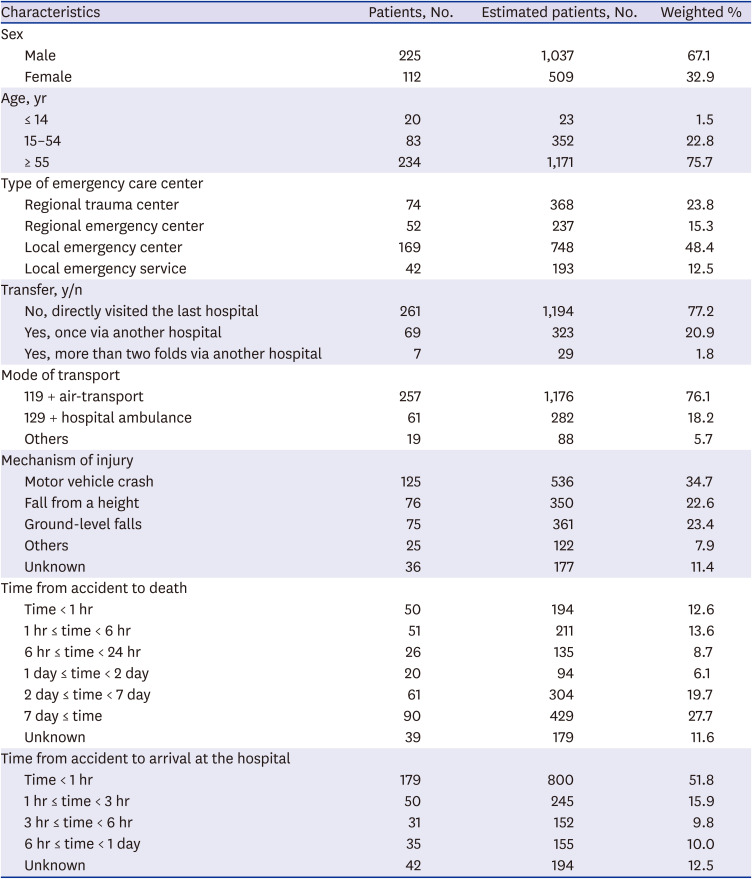

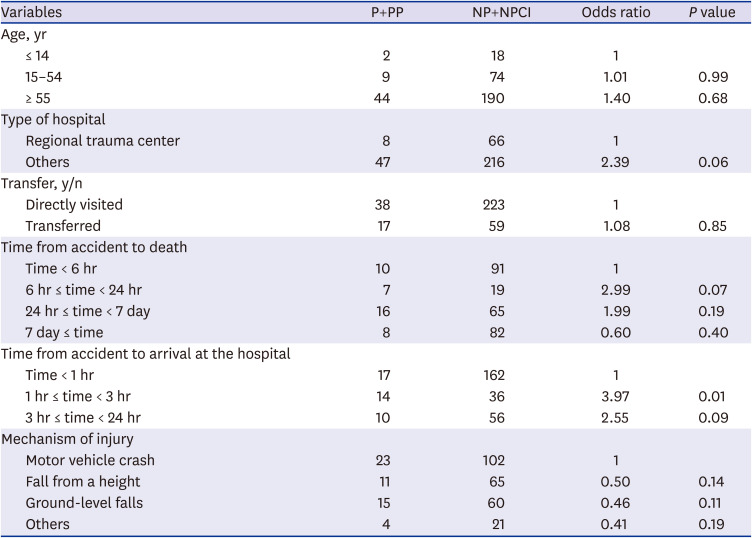


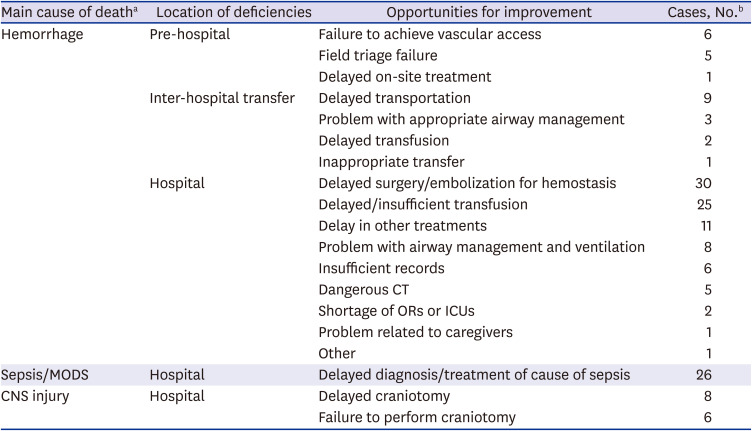




 PDF
PDF Citation
Citation Print
Print



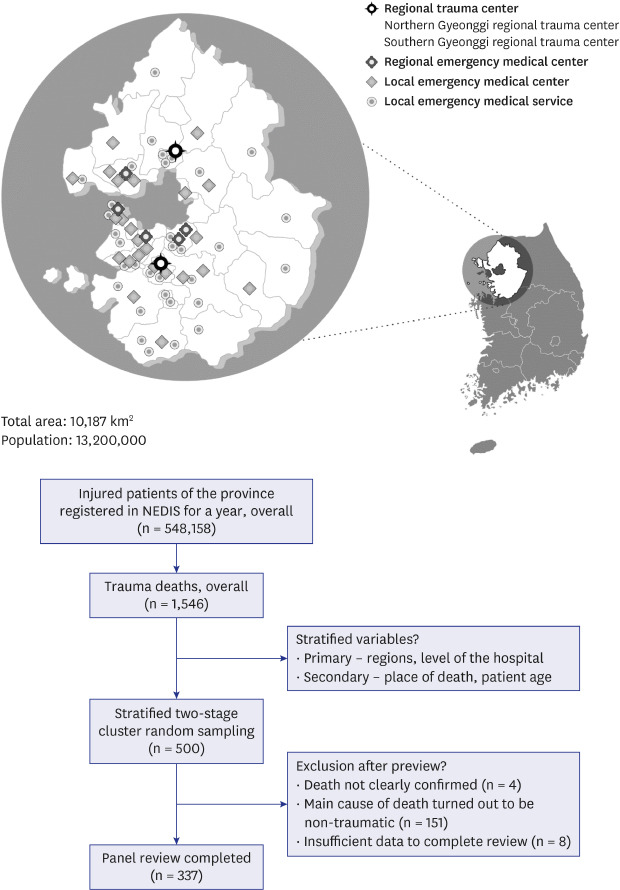
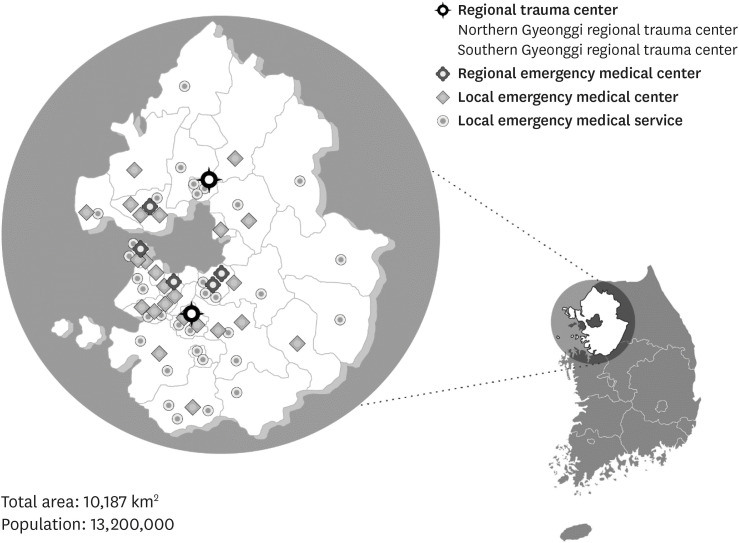
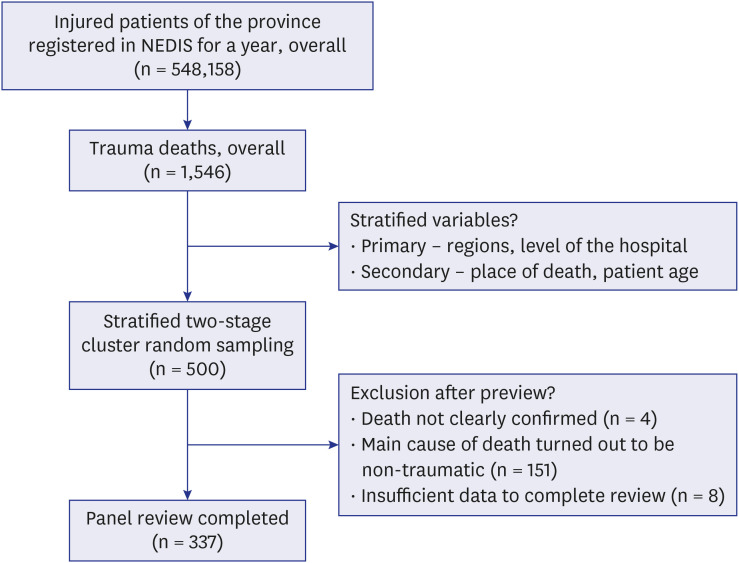
 XML Download
XML Download